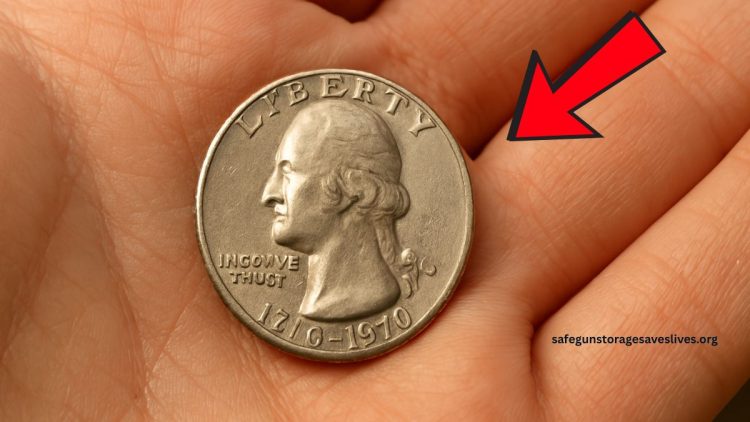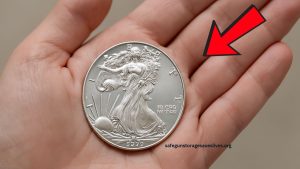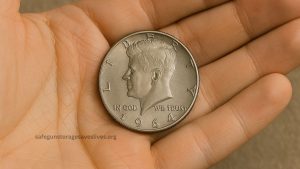In 1976, to commemorate America’s 200th anniversary, the U.S. Mint released a special series of coins celebrating the nation’s revolutionary history.
These Bicentennial coins, which include the quarter, half dollar, and dollar, are not only symbols of freedom and unity but have also become valuable treasures for collectors.
Some of these coins, especially rare varieties, are now worth millions. In this article, we’ll dive into the history, design, and potential value of these remarkable coins.
What Are Bicentennial Coins?
Bicentennial coins were minted to honor the 200th anniversary of the United States’ independence. The U.S. Mint issued three distinct coins as part of this special celebration: the quarter, half dollar, and dollar.
Each of these coins features unique designs symbolizing pivotal moments in American history and showcases the dual date “1776–1976.” These coins were widely distributed, creating a unique intersection of history, art, and numismatics.
The Design of Bicentennial Coins
- Quarter: The quarter features a colonial drummer boy, symbolizing the spirit of the Revolutionary War. Designed by Jack L. Ahr, this iconic design is one of the most recognizable in American coinage history. It evokes a sense of unity and struggle for independence.
- Half Dollar: The half dollar depicts Independence Hall in Philadelphia, where both the Declaration of Independence and the U.S. Constitution were debated and adopted. This coin design by John Reich encapsulates the essence of American democracy.
- Dollar: The dollar coin showcases the Liberty Bell superimposed on the Moon, representing both America’s revolutionary past and its advancements in space exploration. Designed by Dennis R. Williams, this coin highlights America’s unyielding spirit of innovation and freedom.
Factors That Make Bicentennial Coins Valuable
While many Bicentennial coins are accessible and affordable, certain rare varieties have skyrocketed in value due to several key factors:
- Minting Errors: Coins with errors such as double strikes, off-center designs, or unique anomalies can significantly increase in value. A rare minting error on a Bicentennial quarter, for instance, could fetch tens of thousands of dollars at auction. These errors make the coins unique and highly desirable among collectors.
- Composition: Some Bicentennial coins were minted in 40% silver, making them more valuable than their copper-nickel counterparts. Silver versions, particularly those released in collectible proof and uncirculated sets, are especially sought after by collectors. These coins are rarer, enhancing their appeal in the numismatic market.
- Condition: Coins graded as MS-70 (Mint State Perfect) are extremely rare and command premium prices. Pristine coins with no wear are highly coveted and often sold for significantly higher amounts. Grading services like PCGS and NGC can assess the condition of your coin and provide an official grade, which impacts its value.
- Provenance: Coins with a well-documented history or those that have been part of a prominent collection often have added value. The story behind a coin, especially if it was owned by a famous collector, can drive up interest at auction and result in a higher price.
- Rarity of Specific Variants: Certain variations, such as coins minted at the San Francisco Mint with the “S” mintmark, are particularly rare and valuable. These coins, made from 40% silver, are highly sought after by serious collectors.
Key Information About Bicentennial Coins
| Feature | Details |
|---|---|
| Event Celebrated | Bicentennial of U.S. Independence (1776–1976) |
| Key Coins | Quarter, Half Dollar, Dollar |
| Unique Features | Dual Date (1776–1976), Special Reverse Designs |
| Composition | 40% Silver versions for collectors, copper-nickel versions for circulation |
| Potential Value | Standard: $1–$10; Rare Varieties: Up to $5 Million |
| Minting Errors | Double strikes, off-center designs, and other unique anomalies |
| Rarity | Limited production of silver variants and specific mintmarks like “S” for the San Francisco Mint |
How to Start Collecting Bicentennial Coins
- Understand the Basics: Research the different types of Bicentennial coins, their designs, and their historical significance. Resources like the U.S. Mint’s official website and numismatic guides are valuable tools.
- Inspect for Errors: Carefully examine coins for minting errors. Use a magnifying glass or coin loupe to spot signs of double strikes or misalignments. Even minor errors can increase a coin’s value.
- Check Composition: Determine whether the coin is made of 40% silver or copper-nickel. Silver coins are typically more valuable and should be checked carefully.
- Get Coins Graded: Professional grading services like PCGS or NGC assess the coin’s condition and authenticity. Graded coins often fetch higher prices in the market. Ensure you use a reputable grading service.
- Join Coin Collecting Communities: Engage with other collectors through online forums, coin shows, and clubs. Networking with seasoned numismatists can provide you with valuable tips and access to rare finds.
Bicentennial coins offer a unique combination of historical significance, artistic design, and potential value.
Whether you’re a seasoned collector or just starting, these coins can be an exciting and profitable addition to your collection.
With the right knowledge and care, you could uncover a rare gem worth millions while celebrating America’s rich history.
FAQs
What are the most valuable Bicentennial coins?
Rare Bicentennial coins, especially those with minting errors or made from 40% silver, can be worth thousands or even millions.
How can I check if my Bicentennial coin is valuable?
Look for minting errors, inspect the coin’s composition (silver vs. copper-nickel), and have it professionally graded.
Where can I sell my valuable Bicentennial coins?
You can sell your coins at coin dealers, auctions, or through reputable online marketplaces like eBay or Heritage Auctions.



